The REVOLUTION85+ is an 80 Plus Silver power supply series from Enermax featuring modular cabling system, resonant switching, and a synchronous design with DC-DC conversion. The manufacturer promises that units from this series are capable of delivering their rated power at 50° C, and up to 99% of the power can be pulled from the +12 V rails. Power supplies from this series are available in 850 W, 920 W, 950 W, 1020 W, 1050 W and 1250 W flavors. The 920 W and 1020 W are new additions to the series and have four +12 V rails, while the other models have six +12 V rails. Let’s see how the new 920 W model performs in our tests.
By the way, all “older” models (i.e., all models but the 920 W and the 1020 W) come in two versions, SLI or CrossFireX. This only means that they are certified by NVIDIA or AMD/ATI, respectively. Both versions are identical.

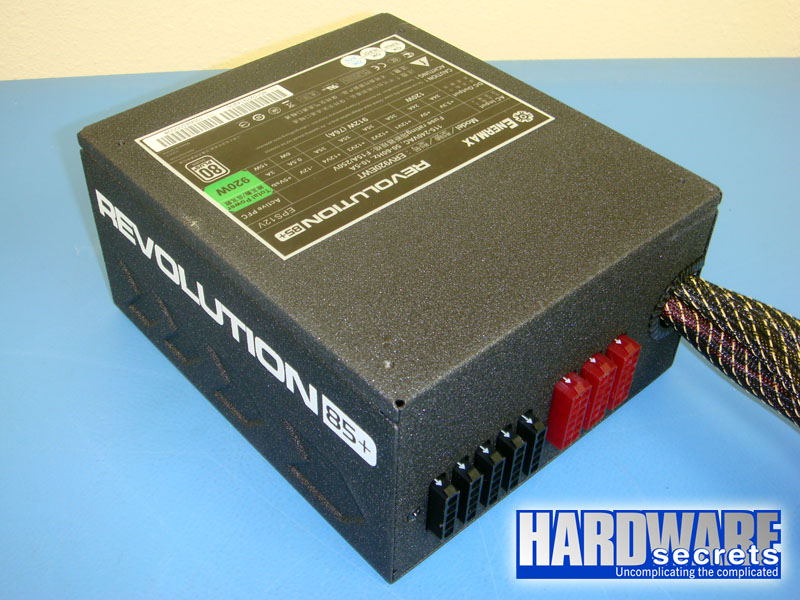
The Enermax REVOLUTION85+ 920 W is a somewhat long power supply, being 7” (180 mm) deep, using a 140 mm fan on its bottom. This fan is a Power Cooler PD1402512H, which is a twister-bearing fan. Unfortunately we couldn’t find the website for this manufacturer and thus we don’t know more specific technical details about it. The UL number available resolves to Enermax, so probably this “brand” belongs to them. This fan keeps rotating for some seconds after you turn off the computer, which is a really nice feature to cool down the power supply components after you are done using your PC.
This unit features active PFC, of course.
It comes with a modular cabling system with eight connectors, three red ones for video card power cables and five black ones for peripheral and SATA power connectors. Five cables are permanently attached to the power supply. The cables included are the following:
- Main motherboard cable with a 24-pin connector, 22.5” (57 cm) long (permanently attached to the power supply)
- One cable with two ATX12V connectors that together form an EPS12V connector, 23 ¼” (59 cm) long (permanently attached to the power supply)
- One cable with one EPS12V connector, 23 ¼” (59 cm) long (permanently attached to the power supply)
- Two cables with one six/eight-pin connector for video cards each, 18 1/8” (46 cm) long (permanently attached to the power supply)
- Four cables with one six/eight-pin connector for video cards each, 20” (51 cm) long (modular cabling system)
- Three cables with four SATA power connectors each, 18 1/8” (46 cm) to the first connector, 4” (10 cm) between connectors (modular cabling system)
- Two cables with three standard peripheral power connectors each, 18 1/8” (46 cm) to the first connector, 4” (10 cm) between connectors (modular cabling system)
All wires are 18 AWG, except the main motherboard cable, which uses thicker 16 AWG wires.
The cable configuration is perfect and will allow you to install directly up to three video cards that require two auxiliary power connectors each. As one red connector of the modular cabling system is left unused, you may buy an additional cable with two six/eight-pin connectors called EMC014 in order to allow you to install up to four video cards that require two auxiliary power connectors each.
It is also important to note that each pair of video card connectors seems to be connected to the power supply through a “Y” cable, but in reality this doesn’t happen, as each connector uses individual wires.
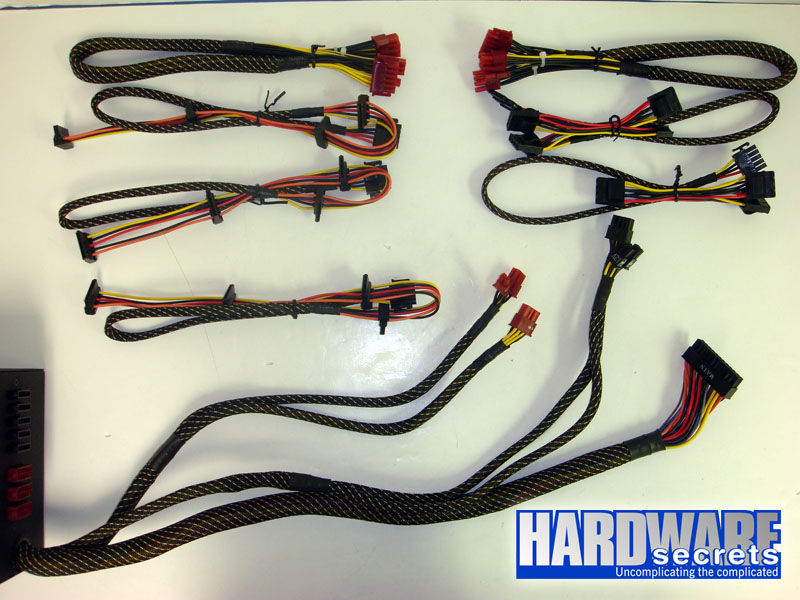
Enermax is giving away with this power supply an Apollish UCAP12 120 mm fan to be used in your case (see Figure 4). We made a short video showing this fan working.
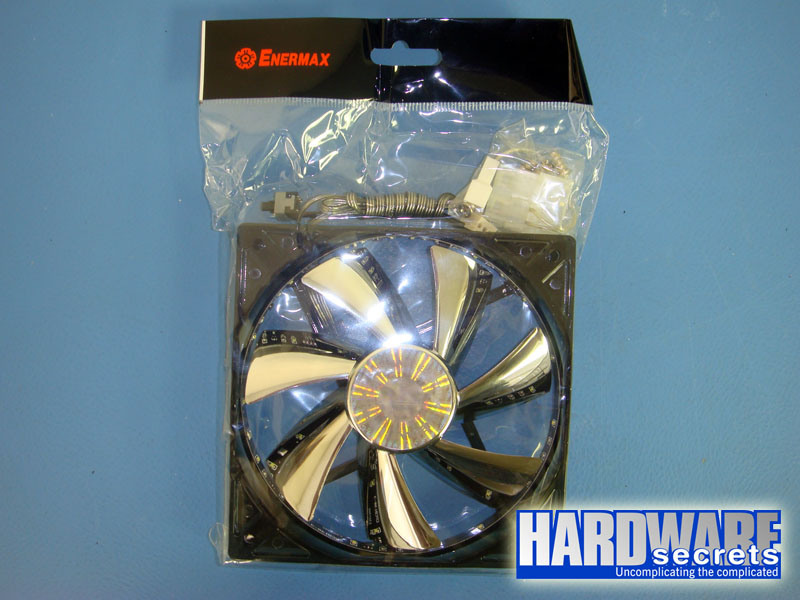
Now let’s take an in-depth look inside this power supply.
[nextpage title=”A Look Inside The REVOLUTION85+ 920 W”]
We decided to disassemble this power supply to see what it looks like inside, how it is designed, and what components are used. Please read our Anatomy of Switching Power Supplies tutorial to understand how a power supply works and to compare this power supply to others.
This page will be an overview, and then in the following pages we will discuss in detail the quality and ratings of the components used.

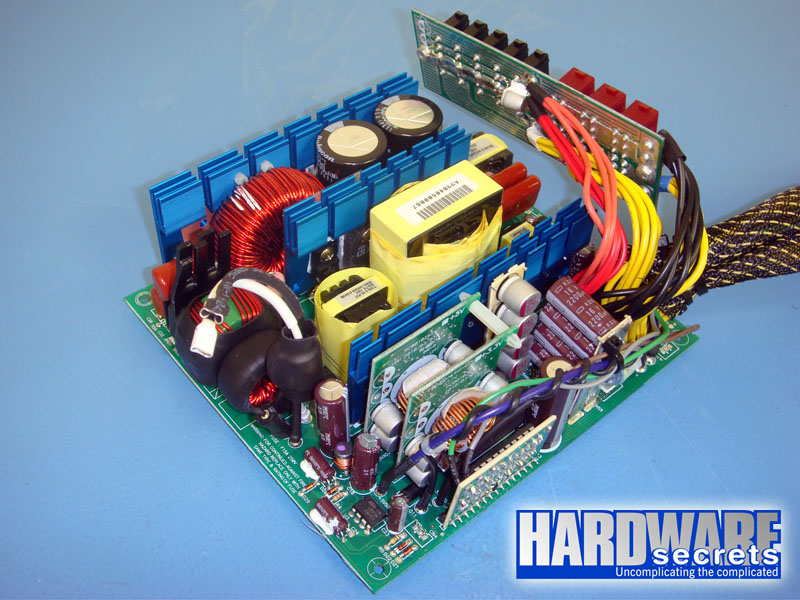
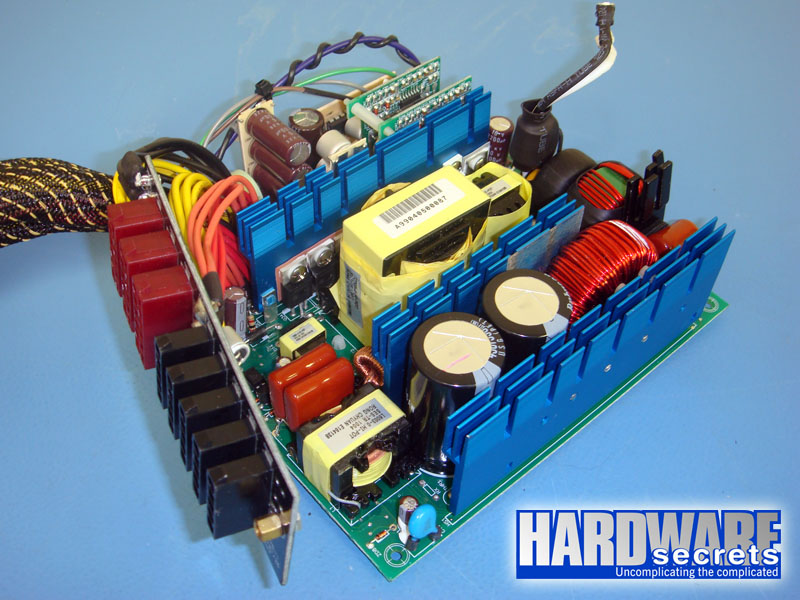
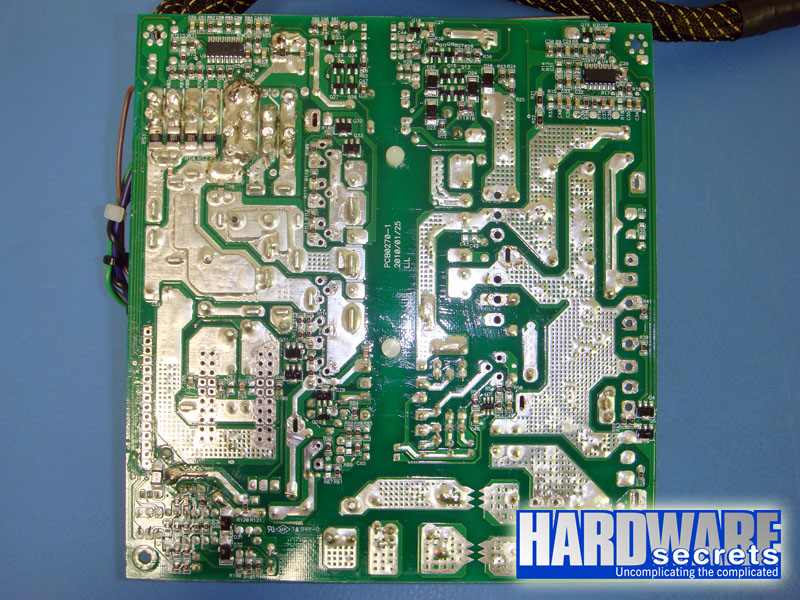
[nextpage title=”Transient Filtering Stage”]
As we have mentioned in other articles and reviews, the first place we look when opening a power supply for a hint about its quality is its filtering stage. The recommended components for this stage are two ferrite coils, two ceramic capacitors (Y capacitors, usually blue), one metalized polyester capacitor (X capacitor), and one MOV (Metal-Oxide Varistor). Very low-end power supplies use fewer components, usually removing the MOV and the first coil.
In this power supply, this stage is flawless. It has one X capacitor, two Y capacitors and one ferrite coil more than the minimum required, plus two X capacitors after the rectifying bridges.
Figure 9: Transient filtering stage (part 1)
Figure 10: Transient filtering stage (part 1)
Figure 11: Transient filtering stage (part 2)
In the next page we will have a more detailed discussion about the components used in the Enermax REVOLUTION85+ 920 W.
[nextpage title=”Primary Analysis”]
On this page we will take an in-depth look at the primary stage of Enermax REVOLUTION85+ 920 W. For a better understanding, please read our Anatomy of Switching Power Supplies tutorial.
This power supply uses two GBU15J rectifying bridges connected in parallel on its primary, and they are connected to a heatsink. Each bridge supports up to 15 A at 100° C, so in theory, you would be able to pull up to 3,450 W from the power grid. Assuming 80% efficiency, the bridges would allow this unit to deliver up to 2,760 W without burning themselves out. Of course, we are only talking about these components, and the real limit will depend on all the other components in this power supply.
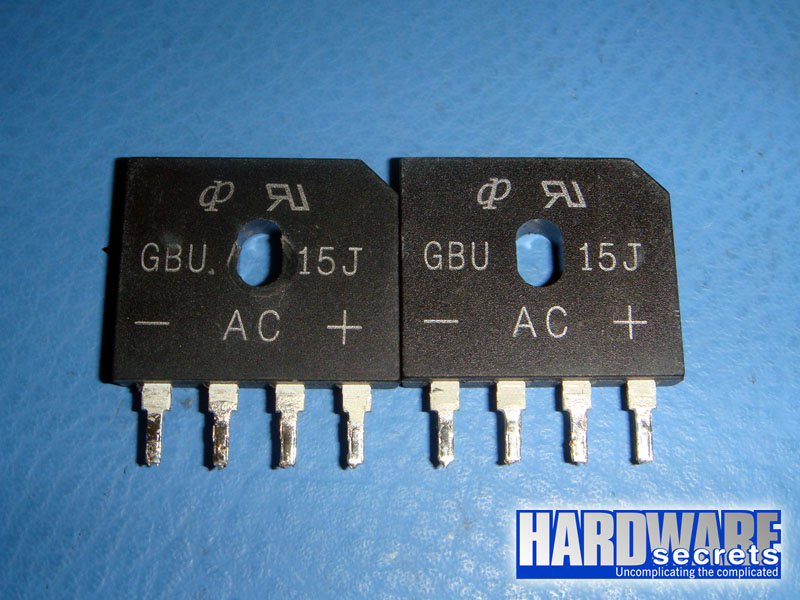
The active PFC circuit uses two TK20J60U MOSFETs, each one capable of delivering up to 20 A at 25° C in continuous mode (unfortunately the manufacturer doesn’t say the current limit at 100° C) or 40 A in pulse mode at 25° C. These transistors present a 165 mΩ resistance when turned on, a characteristic called RDS(on). The lower this number the better, meaning that the transistors will waste less power and the power supply will achieve a higher efficiency.
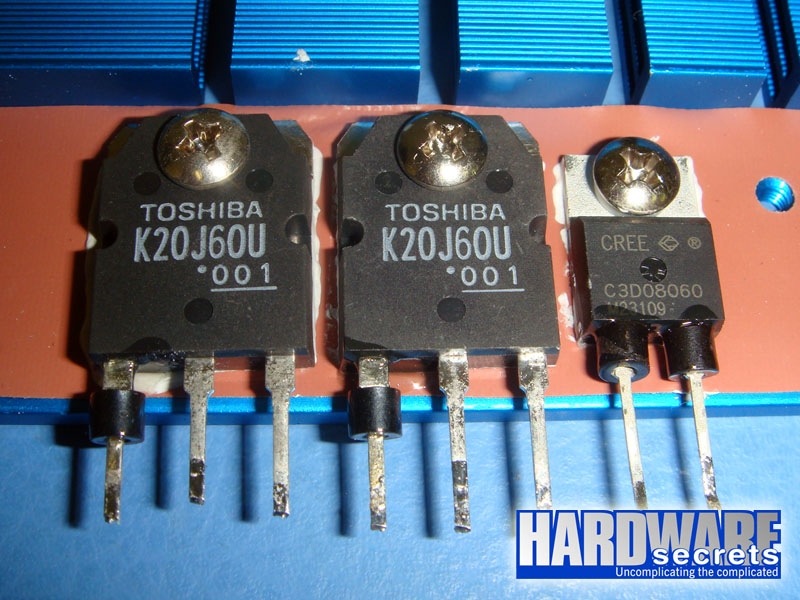
The active PFC circuit is controlled by a CM6502 integrated circuit.
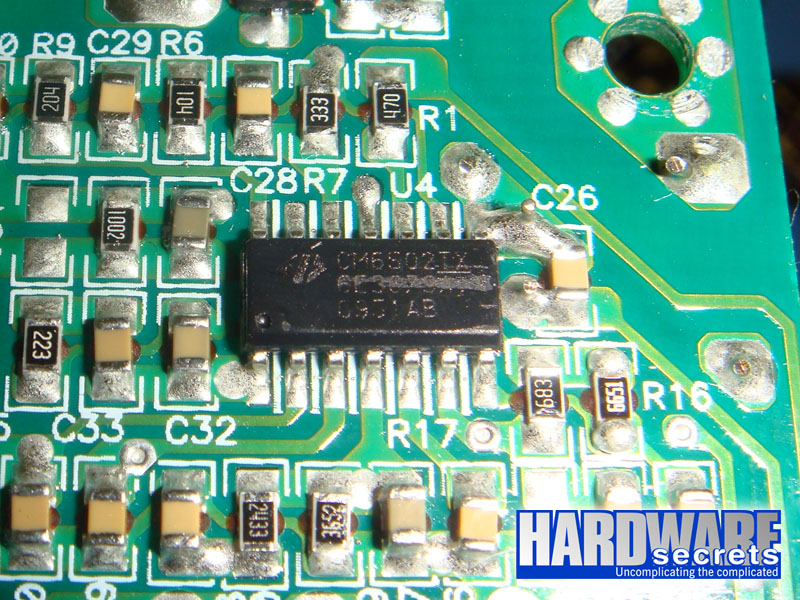
This power supply uses two electrolytic capacitors to filter the output from the active PFC circuit. The use of more than one capacitor here has absolute nothing to do with the “quality” of the power supply, as laypersons may assume (including people without the proper background in electronics doing power supply reviews around the web). Instead of using one big capacitor, manufacturers may choose to use two or more smaller components that will give the same total capacitance, in order to better accommodate space on the printed circuit board, as two or more capacitors with small capacitance are physically smaller than one capacitor with the same total capacitance. The Enermax REVOLUTION85+ 920 W uses two 330 µF x 450 V capacitors connected in parallel; this is the equivalent of one 660 µF x 450 V capacitor.
These capacitors are Japanese, from Rubycon, and are labeled at 85° C.
In the switching section, another two TK20J60U power MOSFET transistors are used. The specs for these transistors were already published above.
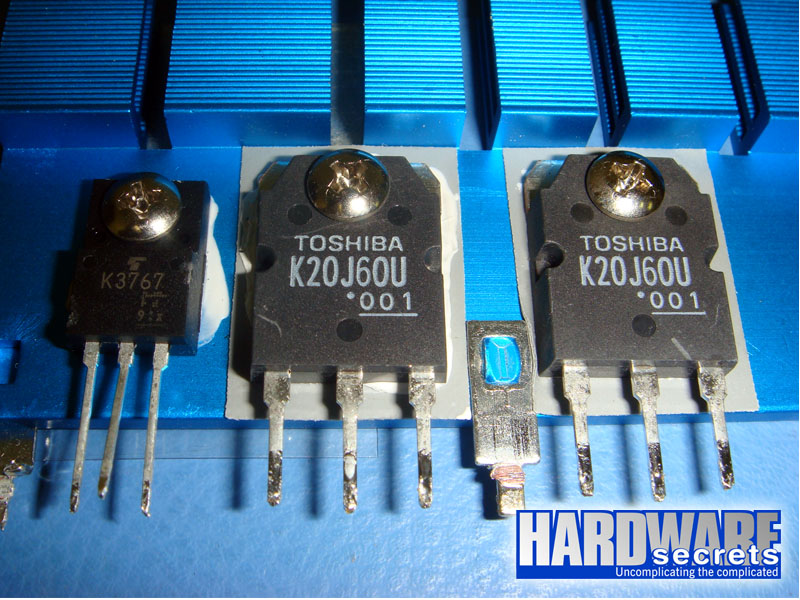
The switching transistors are connected using a design called “LLC resonant,” also known as a series parallel resonant converter, being controlled by a CM6901 integrated circuit, which operates under PWM (Pulse Width Modulation) mode when the power supply is operating under light load but under FM (Frequency Modulation) mode under other loads. This is the same design used in the MODU87+ power supply series from the same manufacturer.
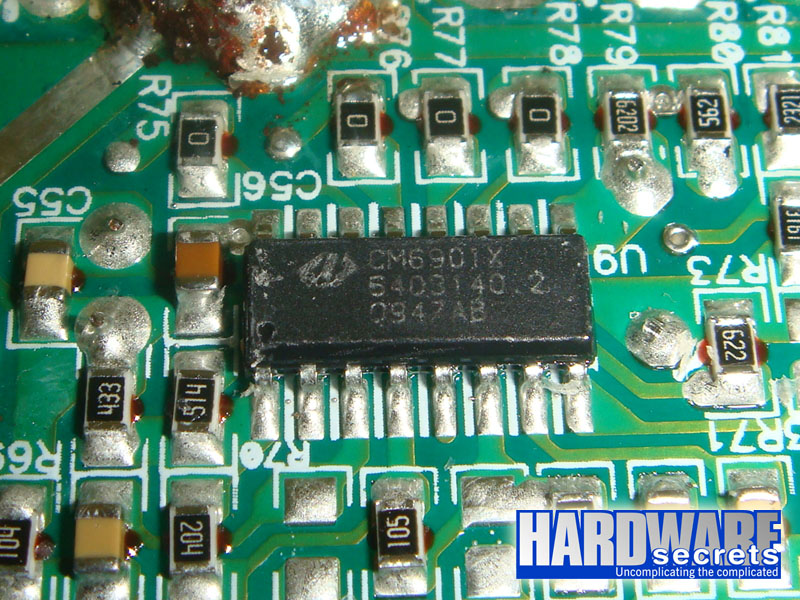
Now let’s take a look at the secondary of this power supply.
[nextpage title=”Secondary Analysis”]
This power supply uses a synchronous design in its secondary, meaning that the Schottky rectifiers were replaced by MOSFET transistors in order to increase efficiency. On top of that this unit uses a DC-DC project, meaning that this unit is basically a +12 V power supply, with the +5 V and +3.3 V outputs being generated by two small power supplies attached to the +12 V output.
The +12 V output is generated by six IPP041N04N MOSFETs, each one capable of handling up to 80 A at 100° C in continuous mode, or up to 400 A at 25° C in pulse mode, with an RDS(on) of only 4.1 mΩ. Three are in charge of the direct rectification while three are in charge of the “freewheeling” part of the rectification process. In this power supply the +12 V output is also used to generate the +5 V and the +3.3 V outputs, as you know. As an exercise, if we assume that all load was exclusively pulled from the +12 V output, we would have a maximum theoretical current limit of 343 A or 4,114 W.
The +5 V and the +3.3 V outputs are generated by two small power supplies available on small daughterboards attached to the +12 V rail. Each of these power supplies is comprised of three APM2556N MOSFETs (60 A at 25° C or 48 A at 100° C, 7.5 mΩ resistance) and one APW7073 PWM controller. They use solid capacitors.
The outputs are monitored by a PS232S integrated circuit that is soldered on the printed circuit board shown in Figure 20. This circuit supports over voltage (OVP), under voltage (UVP) and over current (OCP) protections. This circuit offers six over current protection channels (one for +3.3 V, one for +5 V and four for +12 V), correctly matching the number of +12 V rails advertised by the manufacturer (four).
The electrolytic capacitors available in the secondary are also Japanese, from Chemi-Con, and labeled at 105° C.
[nextpage title=”Power Distribution”]
In Figure 21, you can see the power supply label containing all the power specs.
This power supply has four +12 V rails, and we can confirm that the over current protection (OCP) circuit supports four +12 V channels and the unit has four +12 V “shunts” (current sensors), as shown in Figure 22.
The available rails are distributed like this:
- +12V1 (marked black inside the unit): Main motherboard cable, and ATX12V and EPS12V connectors
- +12V2 (marked white inside the unit): Three of the black connectors (the ones that are closest to the red connectors) and one of the red connectors (the one that is closest to the black connectors) of the modular cabling system
- +12V3 (marked yellow inside the unit): Two of the black connectors (the two farthest from the red connectors) and one of the red connectors (the one in the middle) of the modular cabling system
- +12V4 (marked blue inside the unit): Video card power connectors that are permanently attached to the power supply and the last red connector (i.e., the one that is farther away from the black connectors) of the modular cabling system
This distribution is perfect.
Now let’s see if this power supply can really deliver 920 W.
[nextpage title=”Load Tests”]
We conducted several tests with this power supply, as described in the article Hardware Secrets Power Supply Test Methodology.
First we tested this power supply with five different load patterns, trying to pull around 20%, 40%, 60%, 80%, and 100% of its labeled maximum capacity (actual percentage used listed under “% Max Load”), watching how the reviewed unit behaved under each load. In the table below we list the load patterns we used and the results for each load.
If you add all the power listed for each test, you may find a different value than what is posted under “Total” below. Since each output can vary slightly (e.g., the +5 V output working at +5.10 V), the actual total amount of power being delivered is slightly different than the calculated value. In the “Total” row we are using the real amount of power being delivered, as measured by our load tester.
The +12VA and +12VB inputs listed below are the two +12 V independent inputs from our load tester. During this test the +12VA input was connected to the power supply +12V1 and +12V4 rails, while the +12VB input was connected to the power supply +12V1 rail.
| Input | Test 1 | Test 2 | Test 3 | Test 4 | Test 5 |
| +12VA | 7 A (84 W) | 13 A (156 W) | 20 A (240 W) | 26 A (312 W) | 33 A (396 W) |
| +12VB | 6 A (72 W) | 12 A (144 W) | 19 A (228 W) | 26 A (312 W) | 33 A (396 W) |
| +5V | 2 A (10 W) | 6.5 A (32.5 W) | 8.5 A (42.5 W) | 11 A (55 W) | 13.5 A (67.5 W) |
| +3.3 V | 2 A (6.6 W) | 6 A (19.8 W) | 8 A (26.4 W) | 11 A (36.3 W) | 13.5 A (44.55 W) |
| +5VSB | 1 A (5 W) | 2 A (10 W) | 2 A (10 W) | 3 A (15 W) | 3 A (15 W) |
| -12 V | 0.5 A (6 W) | 0.5 A (6 W) | 0.5 A (6 W) | 0.5 A (6 W) | 0.5 A (6 W) |
| Total | 186.6 W | 367.8 W | 557.3 W | 738.1 W | 923.9 W |
| % Max Load | 20.3% | 40.0% | 60.6% | 80.2% | 100.4% |
| Room Temp. | 45.3° C | 43.6° C | 45.6° C | 47.5° C | 47.8° C |
| PSU Temp. | 39.4° C | 40.3° C | 40.8° C | 42.3° C | 46.0° C |
| Voltage Regulation | Pass | Pass | Pass | Pass | Pass |
| Ripple and Noise | Pass | Pass | Pass | Pass | Pass |
| AC Power | 206.4 W | 406.1 W | 626.0 W | 855.0 W | 1097.0 W |
| Efficiency | 90.4% | 90.6% | 89.0% | 86.3% | 84.2% |
| AC Voltage | 113.1 V | 110.7 V | 108.1 V | 104.8 V | 103.0 V |
| Power Factor | 0.978 | 0.991 | 0.995 | 0.997 | 0.998 |
| Final Result | Pass | Pass | Pass | Pass | Pass |
The Enermax REVOLUTION85+ 920 W can really deliver its labeled wattage at high temperatures.
Efficiency was at outstanding levels when we pulled up to 60% of the unit’s labeled load (i.e., up to 550 W), between 89% and 90%. Efficiency dropped to 86% at 80% load (736 W), and to 84% at full load (920 W). The 80 Plus Silver certification promises 85% minimum efficiency at 20% and 100% loads and 88% minimum efficiency at 50% load, but Ecos Consulting, the company behind 80 Plus, tests power supplies at a room temperature of only 23° C, which is unrealistic. We test power supplies at temperatures between 45° C and 50° C and that is why we usually see lower efficiency numbers compared to the 80 Plus certification, since efficiency drops with temperature.
Voltage regulation was very good, with all voltages within 3% of their nominal values (i.e., voltages closer to their “face value” than required by the ATX12V specification that allows a 5% tolerance for all positive voltages and 10% for -12 V). The exception was for the -12 V output, which was outside this tight regulation, but was still inside the proper range.
Noise and ripple were very low at all times. Below you can see the results for the power supply outputs during test number five. The maximums allowed are 120 mV for +12 V and -12 V, and 50 mV for +5 V and +3.3 V. All values are peak-to-peak figures.
Let’s see if we can pull even more from the Enermax REVOLUTION85+ 920 W.
[nextpage title=”Overload Tests”]
Here we were limited by our equipment, which can only pull up to 1,000 W from power supplies. So, this power supply may be able to deliver even more power than we were able to pull from it.
| Input | Overload Test |
| +12VA | 33 A (396 W) |
| +12VB | 33 A (396 W) |
| +5V | 23.5 A (117.5 W) |
| +3.3 V | 23.5 A (77.55 W) |
| +5VSB | 3 A (15 W) |
| -12 V | 0.5 A (6 W) |
| Total | 998.3 W |
| % Max Load | 108.5% |
| Room Temp. | 48.8° C |
| PSU Temp. | 47.3° C |
| AC Power | 1,234 W |
| Efficiency | 80.9% |
| AC Voltage | 100.3 V |
| Power Factor | 0.998 |
[nextpage title=”Main Specifications”]
The Enermax REVOLUTION85+ 920 W power supply specs include:
- Nominal labeled power: 920 W at 50° C
- Measured maximum power: 998.3 W at 48.8° C (limited by our equipment)
- Labeled efficiency: Between 86% and 92.9% (the box, however, says between 85% and 88% at 115 V and between 87% and 91% at 230 V), 80 Plus Silver certified
- Measured efficiency: Between 84.2% and 90.6% at 115 V (nominal, see complete results for actual voltage)
- Active PFC: Yes
- Modular Cabling System: Yes, partial
- Motherboard Power Connectors: One 24-pin connector, two ATX12V connectors that together form an EPS12V connector, and one EPS12V connector (all permanently attached to the power supply)
- Video Card Power Connectors: Six six/eight-pin connectors in separated cables (two permanently attached to the power supply and four using the modular cabling system), and support for two additional connectors (not included)
- SATA Power Connectors: 12 on three cables (modular cabling system)
- Peripheral Power Connectors: Six in two cables (modular cabling system)
- Floppy Disk Drive Power Connectors: None
- Protections: Over voltage (OVP), under voltage (UVP), over current (OCP), over power (OPP), over temperature (OTP), and short-circuit (SCP)
- Warranty: Five years
- More Information: https://www.enermax.com
- MSRP in the US: USD 239.00
[nextpage title=”Conclusions”]
The Enermax REVOLUTION85+ 920 W proved to be an excellent power supply. We were especially surprised by the outstanding efficiency around 89%-90% achieved when we pulled up to 60% from its labeled capacity (i.e., up to 550 W). Voltage regulation was perfect and noise/ripple levels were always very low.
This power supply allows you to directly install up to three video cards requiring two auxiliary power connectors each, and it has a spare connector on its modular cabling system if you want to buy an additional cable (called EMC014) to make this unit compatible with four video cards.
This unit will reach the US market with a suggested price tag of USD 239, which is not bad for a power supply with this performance and these features, especially because on-line stores usually don’t sell power supplies at their suggested prices, but always give some discount. Of course we always want to see prices as low as possible.




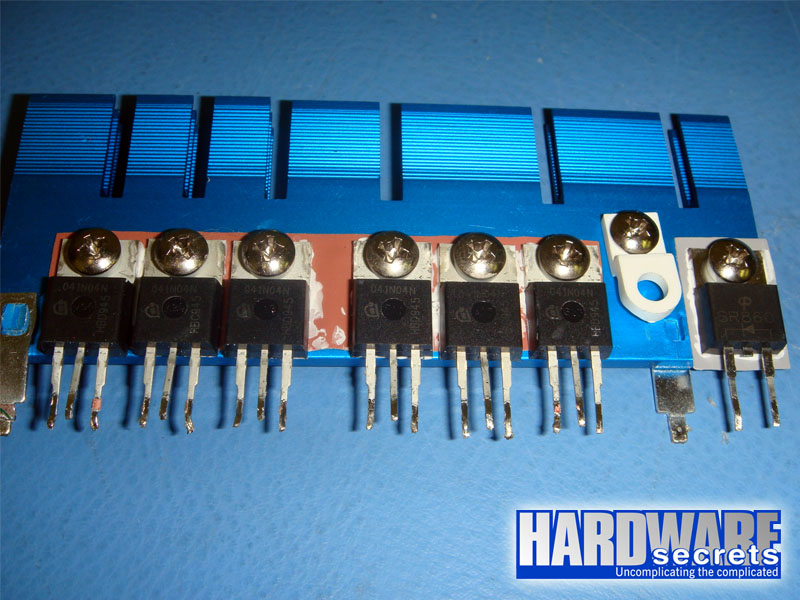
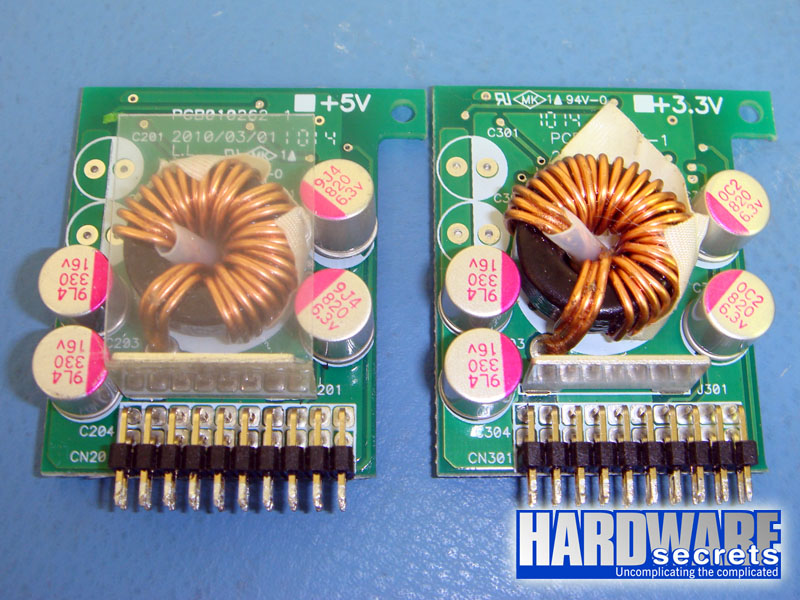
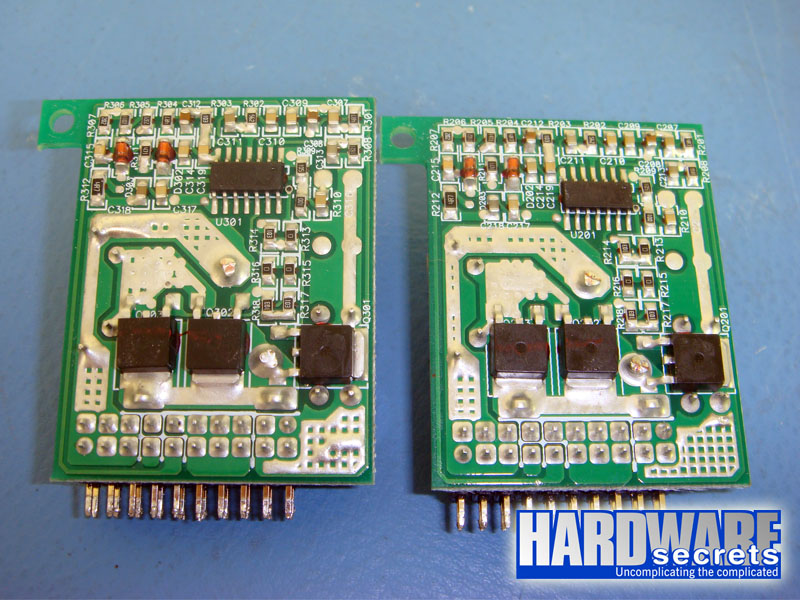
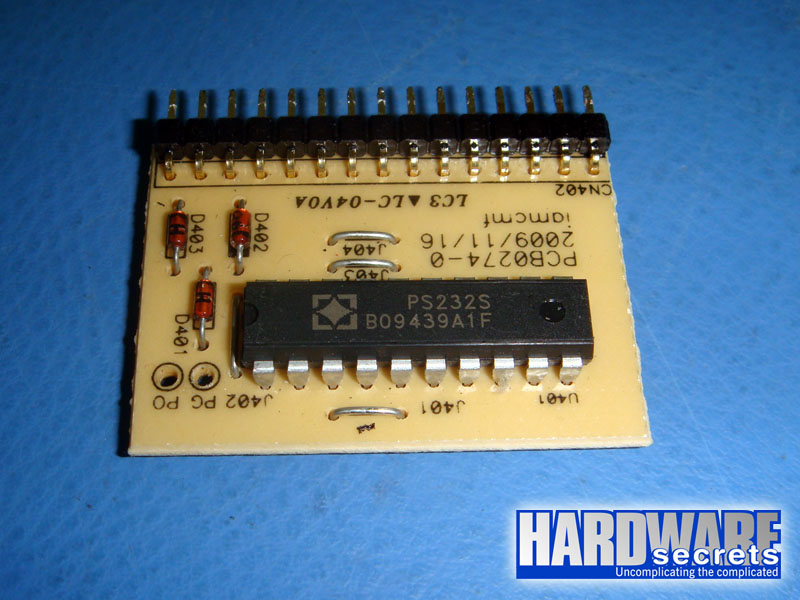
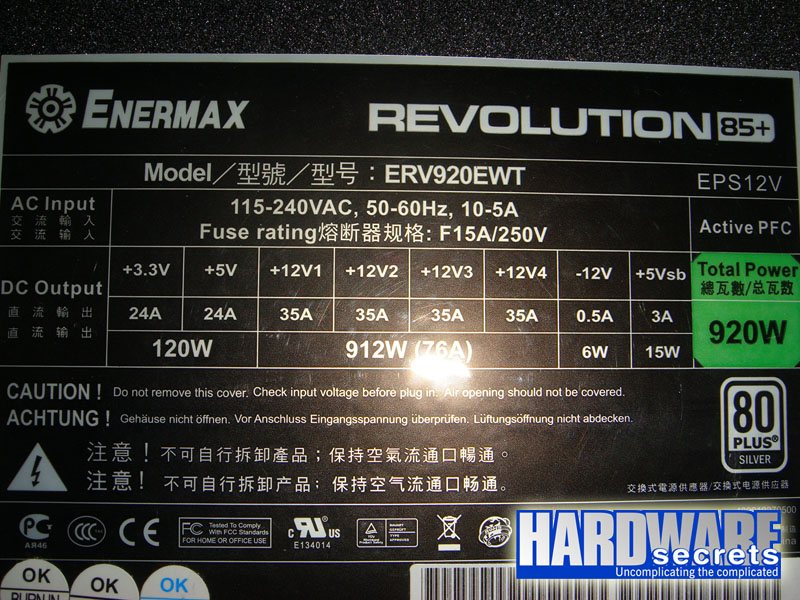


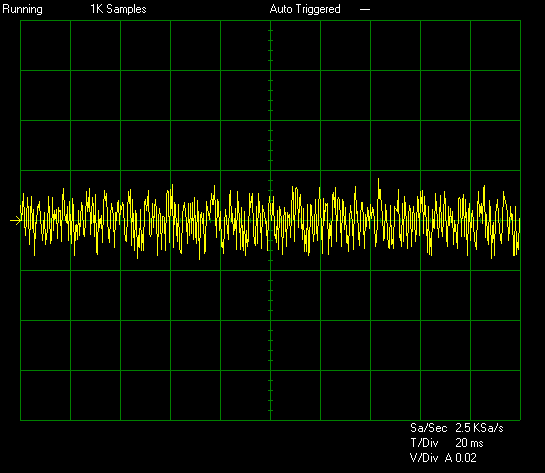
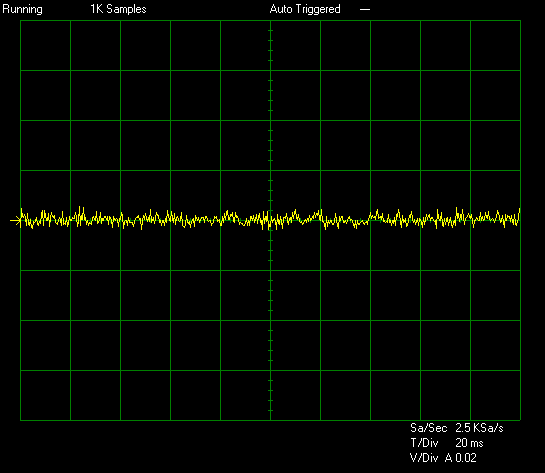
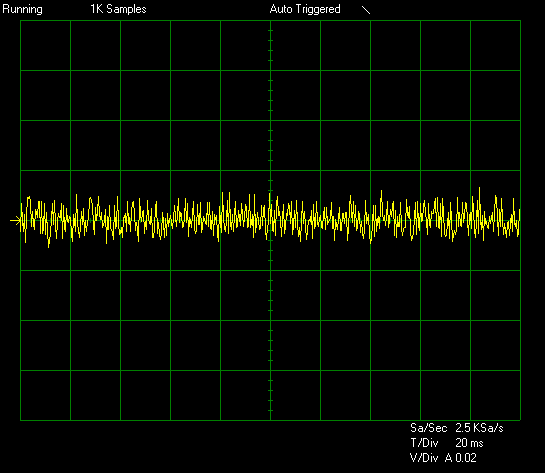
Leave a Reply